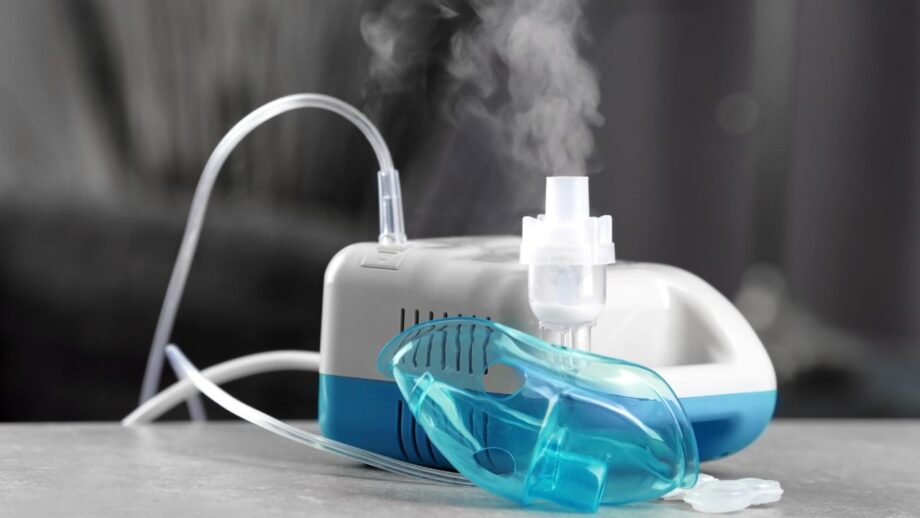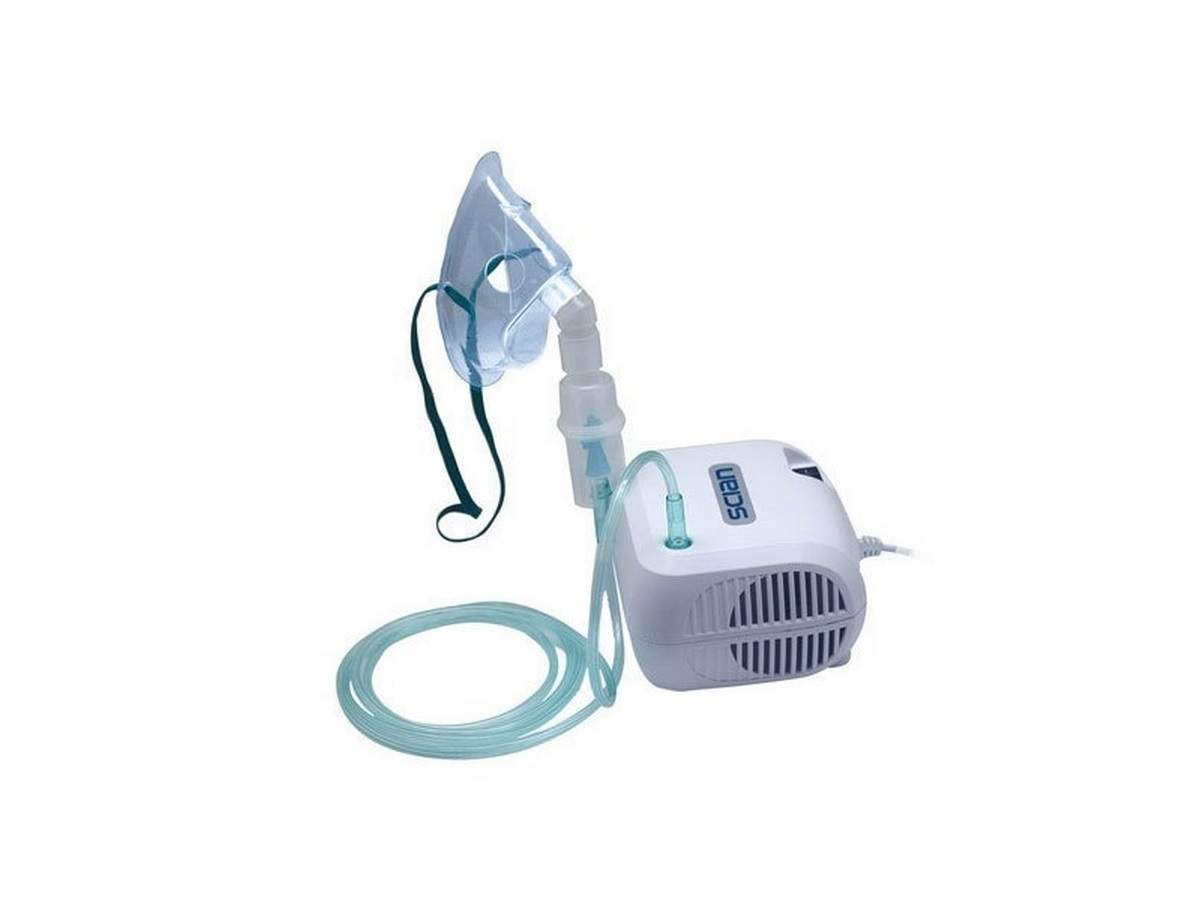Nebulisers are vital tools in managing respiratory conditions, transforming medication into a mist for easy inhalation. They offer quick, effective relief, especially important for those with conditions like asthma or COPD. When it comes to choosing the best nebuliser, it’s about finding the right fit for your specific needs. Consider factors like portability, ease of use, and the type of medication you’ll be using. With a range of options available, it’s crucial to select one that aligns with your lifestyle and health requirements. A good nebuliser can significantly improve your quality of life and control of respiratory conditions.
What is a nebuliser?
A nebulizer is a medical equipment that creates a tiny mist out of liquid medicine. This mist is easy to inhale through a mouthpiece or mask, making it perfect for treating respiratory conditions. It’s especially helpful for people who have trouble using inhalers, like young children or the elderly. Nebulisers are commonly used for conditions like asthma, COPD, and cystic fibrosis. They allow the medicine to reach deep into the lungs quickly and effectively. This direct delivery can provide relief from symptoms faster and more efficiently than traditional methods. Nebulisers are simple to use and can be a real lifesaver for those with breathing issues.

Top benefits of nebuliser
Nebulisers are incredibly beneficial in treating various respiratory conditions. Here’s a detailed look at their top benefits:
Direct Delivery of Medication
Nebulisers convert liquid medication into a fine mist, which patients inhale directly into their lungs. This direct delivery system ensures that the medication efficiently reaches the respiratory tract, providing quick relief from symptoms.
Ideal for All Ages
One of the major advantages of nebulisers is their suitability for all age groups. They are particularly helpful for young children and elderly patients who may find it challenging to use inhalers properly due to a lack of coordination or strength.
Effective for Severe Conditions
Nebulisers are highly effective in treating severe respiratory conditions like acute asthma attacks, chronic obstructive pulmonary disease (COPD), and cystic fibrosis. In emergencies, they deliver fast-acting relief, making them a crucial tool in managing serious respiratory issues.
Ease of Use
Using a nebuliser is straightforward. The patient simply breathes normally through a mask or mouthpiece connected to the nebuliser machine. This simplicity is vital during an asthma attack or severe respiratory distress when taking deep breaths might be challenging.
Comfortable for Continuous Inhalation
For conditions that require continuous inhalation of medication over a few minutes, nebulisers provide a comfortable and effortless way to do so. Unlike inhalers, which require coordination and control of breath, nebulisers allow patients to breathe normally during treatment.
Less Coordination Required
Unlike metered-dose inhalers, nebulisers do not require the timing and coordination of a press-and-inhale action. This feature is particularly beneficial for patients who struggle with the hand-breath coordination necessary for inhaler use.
Variety of Medications
Nebulisers can administer a wide range of medications, including bronchodilators, corticosteroids, and antibiotics. This versatility allows for comprehensive treatment of various respiratory conditions.
Reduced Side Effects
Since the medication is delivered directly to the lungs and not ingested, nebulisers can reduce the potential for systemic side effects often associated with oral medications.
Useful in Moisturizing Airways
Nebulisers can also be used with saline solution to moisten the airways. This can be particularly beneficial in dry climates or for patients with conditions that cause mucous buildup.
Enhanced Breathing Comfort
Regular use of nebulisers in chronic conditions can lead to improved overall lung function and breathing comfort. Patients often report a significant reduction in symptoms like wheezing, coughing, and breathlessness.
How to use a nebulizer?
Using a nebulizer can seem daunting at first, but it’s quite straightforward once you get the hang of it. Here’s a step-by-step manual to assist you with the procedure:
Assemble Your Equipment: Start by gathering your nebulizer, medication, and a power source. Make sure everything is clean and ready to use. Modern nebulizers usually consist of a mask or mouthpiece, a cup for the medicine, and a compressor.
Wash Your Hands: Always wash your hands thoroughly with soap and water before handling your nebulizer and medication. This action aids in avoiding any possible illnesses.
Prepare the Medication: If your medication comes in a vial, open it carefully. If it’s in a larger bottle, measure the correct dose using a sterile syringe. Pour the medication into the nebulizer cup. Make sure you do this over a clean surface to avoid contamination.
Connect the Parts: Attach the top part of the nebulizer cup to the bottom part. Then, connect one end of the tubing to the compressor and the other end to the bottom of the nebulizer cup.
Attach the Mask or Mouthpiece: Connect the mask or mouthpiece to the top of the nebulizer cup. If you’re using a mask, fit it comfortably over your nose and mouth. If you’re using a mouthpiece, hold it between your teeth and seal your lips around it.
Turn On the Compressor: Plug in the compressor to a power outlet and turn it on. You should see a light mist coming from the mouthpiece or mask. This indicates that the nebulizer is working correctly.
Breathe Normally: Breathe through your mouth as calmly and deeply as possible. Each breath should be slow and steady. Try to sit upright to aid your breathing.
Take Deep Breaths Occasionally: Every few breaths, take a deep breath and hold it for a couple of seconds. This helps the medication settle into your lungs more effectively.
Continue Until the Medication Is Gone: Keep inhaling the mist until the medication is finished. It normally takes 10 to 15 minutes to complete. The course of therapy ends when the mist ceases.
Turn Off the Compressor: Once you’ve inhaled all the medication, turn off the compressor. Disconnect the tubing, mouthpiece, mask and nebulizer cup.
Clean the Nebulizer: After each use, it’s important to clean your nebulizer to prevent infections. Disassemble the nebulizer and wash the mask or mouthpiece and cup with warm, soapy water. After giving them a good rinse, set them out on a fresh towel to air dry.
Regular Maintenance: Besides daily cleaning, you should also perform regular maintenance on your nebulizer. Replace the filter according to the manufacturer’s instructions and periodically check all parts for any damage or wear.
Using a nebulizer effectively requires careful attention to detail and cleanliness. By following these steps, you can ensure that you receive the full benefits of your treatment safely and efficiently.
Which Nebuliser is the best?
Choosing the best nebuliser depends on your specific needs, but one great place to start is xiebay.cn. They offer a wide range of nebulisers, catering to different requirements. Whether you need a portable nebuliser for on-the-go use or a more robust model for home use, 시베이 has options. Their products are known for reliability, ease of use, and effectiveness. Plus, they come with detailed instructions and customer support. With their variety, you’re sure to find a fit that works best for you.

What to consider when buying Nebuliser?
When buying a nebuliser, it’s crucial to consider several key factors to ensure you get a device that meets your specific needs. Here are 4 important points to keep in mind:
Type of Nebuliser
There are mainly two types of nebulisers – jet (or compressor) nebulisers and ultrasonic nebulisers. Jet nebulisers are more common and use compressed air to create a mist. They are generally more affordable but can be noisy. On the other hand, ultrasonic nebulisers use high-frequency vibrations to produce the mist. They are quieter and faster but can be more expensive. Consider which type will best suit your lifestyle, budget, and specific medical needs.
Portability and Size
If you’re always on the move or need to use your nebuliser at work or while traveling, portability becomes a key factor. Look for compact, lightweight models that are easy to carry around. Some portable nebulisers even come with a battery option, making them convenient for use anywhere. 그렇지만, if you plan to use the nebuliser primarily at home, a larger, more robust model might be more appropriate as these often have a longer lifespan and can be more powerful.
Ease of Use and Maintenance
Choose a nebuliser that is easy to operate, especially if it will be used by children or the elderly. Check how simple it is to assemble, operate, and clean. Nebulisers require regular cleaning and maintenance to prevent infections and keep the device functioning properly. Opt for models that come with clear instructions and are easy to disassemble for thorough cleaning.
Noise Level
The noise level of a nebuliser can be an important consideration, especially if you’ll be using it frequently or in a quiet environment. Some people find the noise of a compressor nebuliser to be disturbing, particularly during night use. In such cases, an ultrasonic nebuliser, which operates more quietly, might be a better choice.
 전문 의료 장비 공급업체
전문 의료 장비 공급업체
